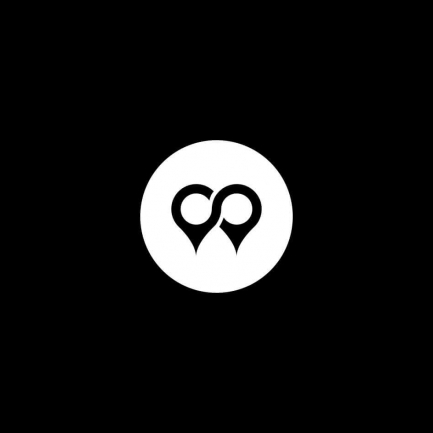I often meet clients who have serious difficulties in explaining us what their web project consists of. It is very difficult for them to organize the information and define those data that are most important when making a web development budget. For this reason I leave you a brief outline of how a briefing should be for the development or website design.
Project description
We will begin our briefing by describing the project in general terms, the companies or organization that supports it and its context.
We are not writing a novel, it is convenient to get to the point and summarize it in no more than 2 or 3 paragraphs.
Contact information
Contact details of the people involved in the development process as well as their departments.
Target audience
Here we will present the audience and the target audience to which the website will be directed.
Age, geographical area, socioeconomic level, sex, professions, studies, hobbies, etc...
It is not necessary to go deeper into this either and it is enough to have a brief idea of the subject.
Products or services offered
Description of the products or services offered by the company in a schematic way and without going into depth. If there are no products or services, such as a website to make people aware of the vegan movement, obviously there is no need to complete this section.
Competence
Definition of the main national and international competitors.
We must always include links to the pages of those companies or organizations.
References
Examples of websites that you like and that you have to look like or overcome. This section is very useful when it comes to understanding the tastes and level of design.
Budget
It is very important to define a budget and expose it openly. In the same way that we do when we buy a laptop or a car, it is very convenient to be clear about this. You have to look for reliable suppliers and trust them. A serious supplier will be able to advise and value everything much better having a budget bracket.
Let's not have them show us the Porsche if we only have a budget for a Dacia.
This can also save you a lot of time in negotiations and searching for a supplier.
Aims
We will start by defining the most intangible objectives, those that help to understand in general terms what the pod is about, but that cannot be measured accurately.
Some examples would be:
· Make the brand known
· Promote the company's services
· Improve online presence
· Improve usability
And then we move on to focus on defining those goals that can be measured and then become the famous KPIs.
These objectives are the ones that really interest us because they are going to condition many of the design and development decisions to a great extent.
We must divide them in two:
Main objective
Reason why we want to develop the website, the main goal, what we are most interested in achieving.
Examples of typical main objectives would be:
· Sell a certain product.
· Get potential customers (leads).
· Obtain donations.
Secondary Objectives
Other objectives which, although not critical, can be of great help to us in achieving them.
Examples of secondary objectives would be:
· Get subscribers to the newsletters.
· Get registered users.
· Get comments in the posts.
· Get product reviews.
Site map
If you have any idea of sections, types of content or sitemap it is best to specify it here.
If you don't know how to organize the content simply specify what kind of information you want to show on the site.
Languages
Define in which languages the site should be available. Also indicate whether the client will provide the translated texts or the development company should take care of this.
Times
Final delivery dates and partial deliveries.
Corporate image and designs
If the company or organization has a logo, it is convenient to attach it to the briefing.
If there are designs or exercises of UX or previous design it is also advisable to attach them.
Functionalities
In this section is where you have to define anything you want the website to do. It is the most important part of the entire web briefing and where we must expand with the details, as it is the most influential on the cost of development.
If we have some technical knowledge or we know more or less of what we are talking about is important to give the more details better.
If you have no idea, it is better to be prudent and try to explain in a simple way what things you want the web to do.
If you don't know what something is called you can give examples of other websites by pasting the address of the website that does what you want.
For example: I want the product photos to look like in zara.com
https://www.zara.com/es/es/rebajas/hombre/blazers/blazer-cuadros-marino-...
Examples of common functionalities are:
· Responsive design.
· Online sales system with shopping cart and payment with card and PayPal.
· Search by words.
· Searcher by words and autocompleted
· Blog with comments and block of related articles.
· Possibility to register users with Facebook (Login with Facebook).
· Paddle court reservation system.
· Customer area where they can download files.
It is also important to detail any integration that needs to be done with other programs or websites.
For example:
· The virtual store must be integrated with a CRM system.
· The parts catalogue must be updated daily against our warehouse management software.
Technology
If it is a new site and you have a predilection for a particular technology you must define it.
If you are not sure, put yourself in the hands of professionals and let them advise you.
I have always argued that you have to choose a trusted provider and work with the technology that the provider dominates. Professionals are hired and these professionals must decide which is the best technology for each project.
In the case of redesign, it must be made very clear what the current technology is and whether it should be maintained or can be changed.
Web Hosting
Indicate the budget available for web hosting.
You can also include extras to improve performance or security such as hiring a CDN or SSL certificate.
Domains
If you already have a domain it is convenient to detail it. If you don't have it, you should suggest domain names to check their availability.
Maintenance
Specify if you have a team to update the content or you need to contract this service.
And that's it. Easy, isn't it? You can also include any other information you deem appropriate, but remember to avoid anything that is not of interest to assess the development.
Now you have no excuse to launch with that crazy idea of web that you have in mind. Get to work, create a briefing for your online project and look for a web design company to prepare a budget for you.



